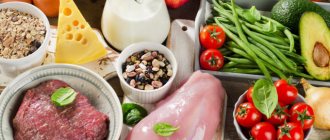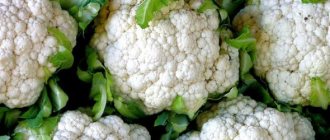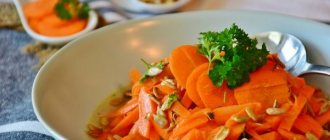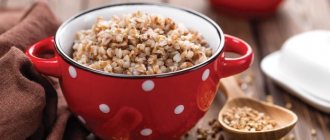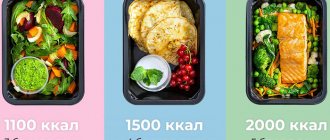Such a day makes it possible to lose from 500 grams to a kilogram of excess weight in one day. Taking into account that there will be no harm to health.
Cottage cheese is an excellent “warrior” on the battlefield with extra pounds. But every warrior needs an assistant. And this assistant is the one who decided to take this brave and correct step - to cleanse your body of everything unnecessary.
Such a healthy product as cottage cheese will not only diversify your menu, but will also become your classic product for a long time.
Benefits of cottage cheese
- The benefit of the product is to stabilize the functioning of the central nervous system, relieve stress, and improve psycho-emotional balance.
- The product helps to better tolerate various problems that cause nervousness.
- This will be an indispensable help for those wishing to lose excess weight. But, in this case, it is necessary to use the product without any additives. And only low-fat. If this condition is met, a loss of three to four kilograms per month is guaranteed.
Harm of cottage cheese
- The theoretical harm of the product is a harmful effect on kidney function. But this is possible provided that you eat it every day in huge quantities. Since no one does this, possible harm is practically excluded. Doctors recommend consuming no more than 100 grams per day, and no more than 3 times a week.
- Excessive consumption may increase blood cholesterol levels. But the percentage of such a result is negligible, and those who are predisposed to this need to listen to the recommendations of doctors.
Optimal consumption options
The benefits and harms of cottage cheese for expectant mothers directly depend on its fat content. The higher the percentage of fat, the greater the chances of gaining unnecessary pounds. But a completely low-fat product is also not an alternative - there is nothing useful left in it afterwards. There are several more rules for choosing quality cheese.
Which cottage cheese is good for pregnant women:
- product fat content up to 5-10%;
- It is better to choose homemade cottage cheese from trusted sellers, but in this case it is almost impossible to determine the fat content;
- The shelf life of a product purchased in a store does not exceed 14 days, after opening or purchased at the market - 3 days.
Curd mass from the store is also not the most suitable option. Most of these products contain dyes, flavors and other additives that are not known to affect the fruit. If you are pretty tired of pure cottage cheese, and adding honey, raisins, nuts, berries, vegetables, spices (garlic, dill) and so on to it no longer helps, then a cottage cheese casserole for pregnant women may be a good option.
The simplest recipe for cottage cheese casserole consists of cottage cheese, eggs, sugar and semolina. The ingredients are thoroughly mixed, whipped with a blender or rubbed through a sieve and baked at 180 C for 35-45 minutes. A spoonful of sour cream, dried apricots, vanillin, lemon zest and a pinch of salt will only enhance the taste and delight a woman.
For the expectant mother and her baby, cottage cheese is an important product. And during fasting days, a soft, proven and non-hazardous way to rest is almost irreplaceable. But, it must be remembered that any cleaning, unloading, etc. should take place after consultation with a doctor. This way you can protect yourself and your baby from unnecessary stress and other undesirable consequences.
Rules for holding a fasting day
The next day, after fasting, in the morning you need to drink a glass of kefir and follow the chosen diet. Meals should occur in 5-6 stages. Water consumption regimen: 1.5-2 liters of clean drinking water.
It is allowed to drink a decoction of dried fruits and herbal tea, but all drinks should not contain sugar. It is advisable to exclude overload, nervous shock and other negative emotions during this period. For this type of diet, it is better to use a product with a minimum fat content - it brings more benefits than low-fat.
Preparation
You need to prepare for unloading in advance. Avoid including fried and fatty foods in your diet the previous day, and in the evening it is recommended to prepare only a vegetable salad for dinner. Specifically for unloading, you need to prepare 600 grams of cottage cheese. This amount should be divided into 6 parts, then eaten one by one.
How often should you have light cottage cheese days? Nutritionists recommend 1-2 times a week.
To avoid hunger, try to eat at regular intervals. During the diet, it is not recommended to exert yourself physically; you should avoid stressful situations.
During the fasting day, do not forget to drink 2 liters of liquid. This can be plain water, green tea, or an infusion of medicinal herbs.
The results show that just such a dietary product will allow you to cleanse your intestines of all unnecessary things, maintain weight, and even lose weight. Losing weight will happen slowly but surely. You can lose 1 kilogram of weight in a week.
Even such a light and pleasant product can get boring. To prevent this from happening, the dish can be varied with various additives.
Fasting day options
On cottage cheese and kefir
Task: per day you need to consume approximately 300 g of a product with minimal fat content or low-fat. The maximum amount of kefir is up to 800 milliliters. The amount of liquid is not limited.
The daily norm of the main product is divided into six parts:
- Breakfast : kefir - 250 g, cottage cheese - 100 g.
- Lunch: cottage cheese with fruit - 155 g.
- Afternoon snack: kefir - 250 g.
- Dinner: cottage cheese - 100 g, honey - 40 g and kefir - 250 g.
- Before going to bed: it is permissible to drink an additional glass of kefir.
- Reception - every two hours.
On cottage cheese and apples
A more gentle option than the previous one. Not recommended for pregnant women and people with high acidity. You can also add buckwheat to the menu, which is an indispensable product for weight loss.
- Breakfast: cottage cheese with raisins - 50 g, 1-2 pieces of green apples, kefir - 250 g.
- Snack: kefir - 250 g (with cinnamon or dill) after a couple of hours (if desired).
- Lunch: 2 baked apples without sugar, kefir - 250 g, cottage cheese with yogurt - 90 g (a few berries are acceptable).
- Afternoon snack: 2-3 apples, rose hip decoction.
- Dinner: cottage cheese - 90 g, grated apple, kefir - 250 g.
- Before bed: optional, kefir with chopped dill - 250 g.
With cottage cheese and green tea
One of the best options, which is recommended even for pregnant women (but only after consultation with a personal doctor).
- Breakfast: low-fat product - 120 g, green tea without sugar and additives - 200 g.
- Snack: low-fat product - 120 g.
- Lunch: low-fat product - 120 g, green tea without sugar and additives - 200 g.
- Afternoon snack: low-fat product - 120 g and green tea - 100 g.
- Dinner: low-fat product - 120 g.
On low-fat cottage cheese
The most stringent unloading option.
- Breakfast: low-fat product - 200 g, any herbal or green tea - 300 g.
- Snack: low-fat product - 200 g, any herbal or green tea - 300 g.
- Lunch: low-fat product - 200 g, any herbal or green tea - 300 g.
- Afternoon snack: low-fat product - 200 g, any herbal or green tea - 300 g.
- Dinner: low-fat product - 200 g, any herbal or green tea - 300 g.
On cottage cheese and bananas
Unloading in this version is quite gentle. Banana is a filling fruit. In a day of such unloading, you can lose from 500 grams to 1 kg of weight.
- Breakfast: a whole banana and 250 ml of still water.
- Snack: a whole apple and 250 ml of still water.
- Lunch: a whole banana and 250 ml of still water.
- Afternoon snack: a whole apple and 250 ml of still water.
- Dinner: a whole banana and 250 ml of still water.
- Before bed: a whole apple and 250 ml of still water.
With cottage cheese and milk
Milk and curd unloading is more liberal. It allows optional inclusion of third-party components, in addition to the main ones. You can also replace milk with tomato juice.
- Breakfast: cottage cheese with steamed rolled oats - 140 g and milk - 250 g.
- Snack: milk-curd mousse.
- Lunch: cottage cheese - 140 g.
- Afternoon snack: milk-curd shake with cinnamon.
- Dinner: curd mousse with a small amount of milk.
- Before bed: milk - 250 g.
On cottage cheese and pumpkin
An excellent carbohydrate-protein duet that enhances the unloading effect.
- Breakfast: boiled pumpkin puree (120 g), combined with a low-fat product and rosehip decoction (or green tea - 250 g).
- Lunch: boiled pumpkin puree (120 g), combined with a low-fat product and rosehip decoction (or green tea - 250 g).
- Afternoon snack: boiled pumpkin puree (120 g), combined with a low-fat product and rosehip decoction (or green tea - 250 g).
- Dinner: boiled pumpkin puree (120 g), combined with a low-fat product and rosehip decoction (or green tea - 250 g).
- Before bed: boiled pumpkin puree (120 g), combined with a low-fat product.
On cottage cheese, apple and kefir
Another type of gentle body clearing, weight balancing and general health improvement. Additions in the form of dried fruits, honey or berries are allowed.
- Breakfast: cottage cheese with raisins - 55 g, 1-2 green apples, low-fat fermented milk drink 250 g.
- Snack: fermented milk drink (250 g) with cinnamon or chopped dill (2 hours after breakfast).
- Lunch: 2-3 baked apples without sugar and other additives, fermented milk drink - 250 g, cottage cheese - 90 g (weight - cottage cheese + 70 g yogurt + some berries if desired).
- Afternoon snack: 2-3 apples and rose hip decoction.
- Dinner: cottage cheese - 100 g, grated apple and fermented milk drink - 250 g.
- Before bed: fermented milk drink with chopped dill - 250.
On cottage cheese and eggs
- Breakfast: boiled egg, cottage cheese - 50 g, kefir - 250 g.
- Lunch: boiled egg, cottage cheese - 50 g, kefir - 250 g.
- Afternoon snack: cottage cheese - 50 g.
- Dinner: boiled egg, cottage cheese - 50 g, raw water - 250 g.
A very interesting unloading option. Especially for those who find it difficult to stick to only cottage cheese and fruits.
On cottage cheese and watermelon
Unloading option for the summer, when watermelons are easiest to buy.
- Breakfast: watermelon - 300 g, cottage cheese - 200 g.
- Snack: berries - 500 g, cottage cheese - 200 g.
- Lunch: watermelon - 500 g, cottage cheese - 200 g.
- Afternoon snack: berries - 600 g.
- Dinner: watermelon - 600 g.
With cottage cheese and sour cream
Unloading involves drinking only regular drinking water.
- Breakfast: low-fat product - 120 g, sour cream - 12 g, sugar - 20 g, drinking water - 100 g.
- Snack: low-fat product - 120 g, sour cream - 12 g, sugar - 20 g.
- Lunch: low-fat product - 120 g, sour cream - 12 g, sugar - 20 g, drinking water - 100 g.
- Afternoon snack: low-fat product - 120 g, sour cream - 12 g, sugar - 20 g, drinking water - 100 g.
- Dinner: low-fat product - 120 g, sour cream - 12 g, sugar - 20 g, drinking water - 100 g.
On cottage cheese with honey
The good thing about the daily layout is that the portions of the product consumed are the same everywhere - it’s difficult to mix something up. You just need to divide the workpiece into five parts.
- Breakfast: cottage cheese and honey mass (cottage cheese - 100 g + honey - 12 g) and rosehip decoction - 200 g.
- Snack: cottage cheese and honey mass (cottage cheese - 100 g + honey - 12 g) and rosehip decoction - 200.
- Lunch: cottage cheese and honey mass (cottage cheese - 100 g + honey - 12 g) and rosehip decoction - 200 g.
- Afternoon snack: cottage cheese and honey mass (cottage cheese - 100 g + honey - 12 g) and rosehip decoction - 200 g.
- Dinner: cottage cheese and honey mass (cottage cheese - 100 g + honey - 12 g) and rosehip decoction - 200 g.
On cottage cheese and fruits
An option for those who find it difficult to withstand severe food restrictions.
- Breakfast: cottage cheese - 120 g, any fruit - 50 g, decoction of chamomile and rose hips - 400 g.
- Snack: cottage cheese - 120 g, decoction - a mixture of chamomile and rose hips - 400 g.
- Lunch: cottage cheese - 120 g, any fruit - 50 g, decoction of chamomile and rose hips - 400 g.
- Afternoon snack: cottage cheese - 120 g, any fruit - 50 g, decoction of chamomile and rose hips - 400 g.
- Dinner: cottage cheese - 120 g, any fruit - 50 g, decoction of chamomile and rose hips - 400 g.
- Before bed: a decoction of a mixture of chamomile and rose hips - 400 g.
On cottage cheese and berries
In this option, you can use a handful of steamed dried fruits instead of any fresh berries.
- Breakfast: low-fat product - 120 g, fresh berries - 40 g, rosehip decoction - 250 g (still water, tea without sugar).
- Snack: low-fat product - 120 g, fresh berries - 40 g.
- Lunch: low-fat product - 120 g, fresh berries - 40 g, rosehip decoction - 250 g (still water, tea without sugar).
- Afternoon snack: low-fat product - 120 g, fresh berries - 40 g, rosehip decoction - 250 g (still water, tea without sugar).
- Dinner: low-fat product - 120 g, fresh berries - 40 g, rosehip decoction - 250 g (still water, tea without sugar).
- Before bed: rosehip decoction - 250 g.
On cottage cheese during pregnancy
It is recommended to arrange such days for pregnant women in the third trimester.
- Breakfast: cottage cheese - 100 g, fresh berries - 200 g and filtered drinking liquid - 250 g.
- Lunch: cottage cheese - 100 g, fresh berries - 200 g and filtered drinking liquid - 250 g.
- Afternoon snack: cottage cheese - 100 g, fresh berries - 200 g and filtered drinking liquid - 250 g.
- Dinner: cottage cheese - 100 g, fresh berries - 200 g and filtered drinking liquid - 250 g.
Nutritional value, calorie content of cottage cheese
Cottage cheese has a high protein content, and this protein is characterized by a number of essential qualities:
- animal protein contains the required proportions of amino acids required for the proper development of the body;
- special fermentation of protein in cottage cheese simplifies its absorption; curd protein is processed by the body more easily than protein in yogurt or whole milk;
- Animal proteins are divided into “fast” and “slow”. “Fast” proteins provide the body with energy in a short time, and “slow” proteins maintain a feeling of fullness for 5 hours.
Athletes are prescribed cottage cheese diets for muscle growth during training. Calcium in cottage cheese is necessary for children during the formation of teeth and bones, and for older people - as a prevention of osteoporosis. Cottage cheese contains carbohydrates in the form of lactose and galactose, the processing of which requires special enzymes.
Nutritional value, calorie content of cottage cheese
An important indicator of any product is its energy value. It is determined in kilocalories contained in 0.1 kg of product. Numerous types of cottage cheese with almost the same value of proteins and carbohydrates (from 2 to 16 g per 0.1 kg) have different fat content, respectively, the higher the fat content, the higher the calorie value.
It is customary to distinguish three conditional categories of caloric content of cottage cheese:
- low-calorie (1% - 80 kcal, 2% - 85 kcal);
- medium-calorie (4% - 105 kcal, 5% - 120 kcal, 9% - 160 kcal);
- high-calorie (18% - 235 kcal).
Nutritional and energy value of cottage cheese per 0.1 kg:
| Fat content, % | Proteins, g | Fats, g | Carbohydrates, g | Calorie content, kcal |
| 0 | 16,49 | 0 | 1.31 | 71 |
| 1 | 16,31 | 1 | 1,31 | 80 |
| 2 | 18,1 | 2 | 3,31 | 85 |
| 4 | 15,7 | 4 | 1,4 | 105 |
| 8 | 16 | 8 | 1,5 | 138 |
| 9 | 16,7 | 9 | 2 | 160 |
| 11 | 16 | 11 | 1 | 170 |
| 18 | 14 | 18 | 2,8 | 235 |
These numbers will help you navigate when choosing cottage cheese for an effective diet. Low-fat or low-fat cottage cheese will help keep your diet varied and within your daily caloric intake. It is impossible to completely exclude the consumption of animal fats, since they actively participate in metabolic processes and the formation of hormones in the body.
Cottage cheese contains useful microelements and vitamins: A, beta-carotene, C, PP, E, B vitamins: 1, 2, 4, 5, 6, 9, 12, minerals: potassium, calcium, magnesium, phosphorus, iron, copper , fluorine, manganese. It should be understood that low-fat cottage cheese will not contain fat-soluble vitamins, which means its nutritional value will be less than that of cottage cheese even with minimal fat content.
Approximate content per 0.1 kg:
| Cottage cheese, 18% fat | Cottage cheese, 9% fat | |
| Calorie content, kcal | 235 | 160 |
| Proteins, g | 14 | 16,7 |
| Fats, g | 18 | 9 |
| Carbohydrates, g | 2,8 | 1,9 |
| Vitamin A, mg | 0,19 | 0,079 |
| Vitamin B1, thiamine, mg | 0,049 | 0,039 |
| Vitamin B2, mg | 0,31 | 0,029 |
| Vitamin C, mg | 0,51 | 0,51 |
| Vitamin PP, niacin, mg | 0,29 | 0,39 |
| Iron, mg | 0,51 | 0,41 |
| Potassium, mg | 112 | 112 |
| Calcium, mg | 150,0 | 164,0 |
| Magnesium, mg | 23,0 | 23,0 |
| Sodium, mg | 50,0 | 52,0 |
| Phosphorus, mg | 95,0 | 95,0 |
The production of cottage cheese consists of fermenting milk and then removing the whey, which contains the bulk of carbohydrates. For a person suffering from complete or partial inability to break down lactose, cottage cheese products are suitable. However, if you have an allergic reaction to cow's milk protein, cottage cheese should be consumed with caution.
Often a person trying to lose weight refuses to eat cottage cheese because of its cholesterol content. However, in cottage cheese products it is present in volumes necessary to maintain normal hormonal levels and metabolic processes.
Nutritional value, calorie content of cottage cheese
An important component of cottage cheese is amino acids, which are components of proteins that form bone, tendon, muscle tissue, hormones, and antibodies. The body can obtain essential amino acids in the only way - from food.
Cottage cheese contains arginine, leucine, histidine, methionine, valine, lysine, tryptophan. Amino acids support the proper growth of the human skeleton and muscles, take part in hematopoiesis, the functioning of the endocrine system organs - the thyroid gland, adrenal glands, liver; nervous system; support healthy metabolism.
Comparative amino acid content:
| Amino acid | Beef | Milk | Low-fat cottage cheese |
| Lysine | 1,60 | 0,25 | 1,46 |
| Methionine + cysteine | 0,451 | 0,081 | 0,49 |
| Tryptophan | 0,22 | 0,061 | 0,171 |
| Leucine | 1,47 | 0,33 | 1,86 |
| Isoleucine | 0,79 | 0,20 | 1,0 |
| Valin | 1,03 | 0,19 | 0,89 |
| Threonine | 0,80 | 0,15 | 0,80 |
| Phenylalanine + tyrosine | 0,78 | 0,16 | 0,94 |
| Histidine | 0,72 | 0,081 | 0,56 |
Each organ requires its own set of amino acids, which is why it is so important to adjust nutrition if any problem arises. Cottage cheese is indispensable here; it is recommended for dysfunctions of the digestive organs, cardiovascular system, if necessary, to reduce body weight, to strengthen the body.
What does the diet promise?
The diet promises nothing. She offers to follow the right path, and speaks only of what will happen if you firmly and strictly follow it. Then there will be a tangible result. The body will be cleansed of toxins, metabolism will improve, the general condition will stabilize and negative processes will stop.
Unloading can seriously move the scales in the desired and desired direction. Striving to be beautiful and desirable, you need to sacrifice something - the same patience. And knowing that this sacrifice is harmless and will not harm the body will add moral strength.
The secret of this delicious and very enjoyable diet is in your hands. If you can walk along this difficult path, you will find yourself at the height you were striving for. If you can’t, your time won’t be wasted anyway. How much benefit will there still be? If you start something, you need to go to the end, and not stop halfway.
How to diversify curd unloading
If there is only one curd, then after some time you will not be able to look at it. Try eating it with different additives: tasty and healthy. Nutritionists recommend alternating: once with kefir, the next time with a sweet product, for example, a banana.
Sample menu based on cottage cheese and kefir, 2% fat. You need to prepare 500 grams of the main product, 1 liter of kefir, water, green tea, honey, berries:
- Breakfast: cottage cheese with a cup of green tea (unsweetened):
- Snack: a cup of kefir;
- Lunch: main product, kefir, still water;
- Snack: cottage cheese, a handful of berries, kefir;
- Dinner: main product, green tea, a spoon of honey;
- At night: a glass of kefir, if you want to eat, then a portion of cottage cheese.
Reviews
Reviews from people who have tried this method on themselves and made their own conclusions about a fasting day on cottage cheese:
Alexandrova Anastasia
Nutrition and healthy lifestyle specialist and author of myfitnesblog.com. For many years, she has successfully helped women and men lose weight and maintain a beautiful figure.
How to choose cottage cheese for weight loss
A fasting day on cottage cheese will be most effective if you use low-fat cottage cheese, which has the lowest calorie content. This cottage cheese is suitable for a wide variety of diets. A valuable product for maintaining slimness is albumin curd, produced from whey.
Its main protein is not casein, like ordinary cottage cheese, but the albumin protein contained in the whey. This cottage cheese supports the immune system, stimulates metabolism, restores liver tissue, and removes cholesterol.
How to choose cottage cheese for weight loss
Regular consumption of albumin curd helps improve vision. It is not recommended to use cottage cheese with additives that increase its calorie content, such as sugar, jam, sour cream, and dried fruits for a fasting day. Also, factory-made sweet curds will not give the desired effect.
When buying cottage cheese in a supermarket, you should check for signs of a quality product:
- milky white color;
- crumbly, granular consistency;
- slight odor of milk or yeast;
- slight sour taste;
- leaves an oily residue on the fingers;
- the date of manufacture should be as close as possible to the date of purchase;
- a natural product should have a short shelf life - cottage cheese, pasteurized in factory packaging for 5 days, homemade for 2 days.
Signs of low-quality cottage cheese:
- yellow, uneven color, greenish inclusions indicate the presence of mold;
- dry hard grains or excessively liquid consistency;
- a bitter taste indicates the presence of mold;
- a stale smell indicates the proliferation of rotting bacteria;
- a sharp acidic taste is a consequence of fermentation due to the manufacturer’s failure to comply with production conditions or the addition of antibiotics;
- the vinegar smell is the result of exposure of the product to temperatures exceeding permissible limits;
- yeasty taste and smell, swelling of the packaging - a sign of improper content of the product or the presence of E. coli;
- no milk smell;
- does not leave a mark on the fingers;
- defrosted;
- damaged packaging;
- expired.
The addition of starch by the manufacturer can only be detected at home by dropping iodine into the cottage cheese. If starch is present, the product will turn blue. Eating cottage cheese that has expired will lead to digestive problems and even poisoning, so if you have doubts about its freshness, you should not eat such a product.
Advantages and disadvantages
| pros | Minuses |
|
|
Indications for unloading the body
The basic principle of nutrition that an expectant mother should adhere to is moderation. While expecting a baby, pregnant women should not limit their diet unnecessarily. Doctors can recommend fasting days to pregnant women when:
- gestosis;
- rapid weight gain;
- disorders of the gastrointestinal tract, constipation;
- exacerbation of chronic diseases, especially with pathologies of the kidneys and liver;
- swelling;
- shortness of breath;
- diseases of the cardiovascular system.


